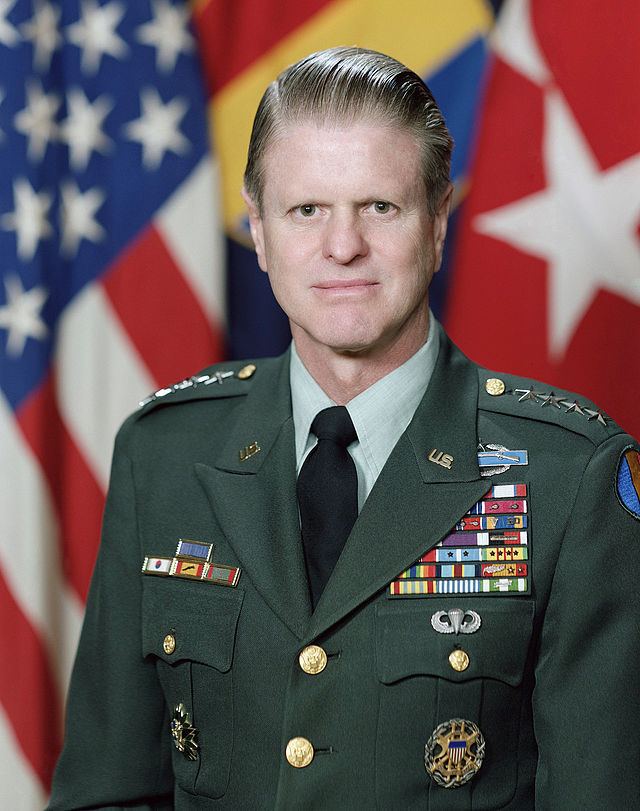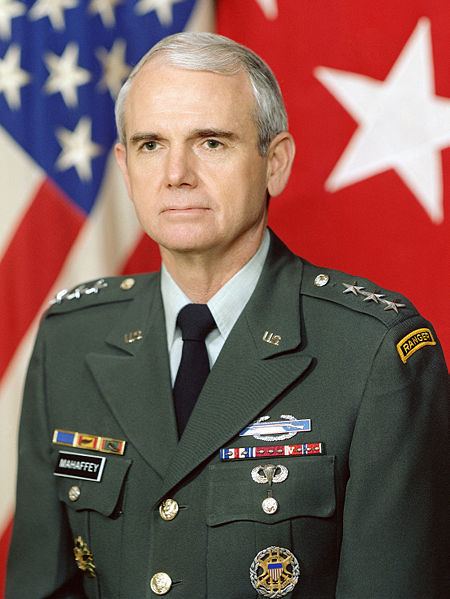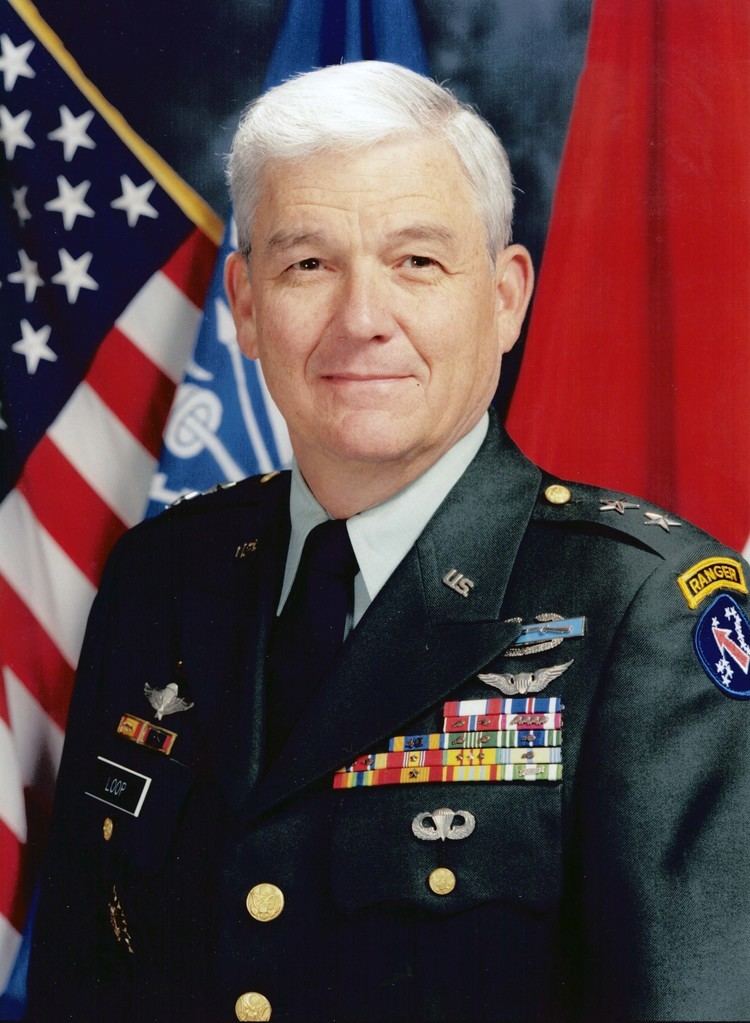Country United States Non-NATO rank O-10 Movie It Conquered the World | Abbreviation GEN or Gen NATO rank OF-9 Played by David McMahon | |
 | ||
Service branch | ||
In the United States Army, United States Marine Corps, and United States Air Force, general (abbreviated as GEN or Gen) is a four-star general officer rank, with the pay grade of O-10. General ranks above lieutenant general and below General of the Army or General of the Air Force; the Marine Corps does not have an established grade above general. General is equivalent to the rank of admiral in the other uniformed services. Since the grades of General of the Army and General of the Air Force are reserved for wartime use only, and since the Marine Corps has no five-star equivalent, the grade of general is currently considered to be the highest appointment an officer can achieve in these three services.
Contents

Statutory limits

The United States Code explicitly limits the total number of general officers (termed flag officers for the Navy) that may be on active duty at any given time. The total number of active duty general officers is capped at 231 for the Army, 61 for the Marine Corps, 198 for the Air Force, and 162 for the Navy. No more than about 25% of a service's active duty general or flag officers may have more than two stars, and statute sets the total number of four-star officers allowed in each service. This is set at 7 four-star Army generals, 9 four-star Air Force generals, 2 four-star Marine Generals, and 6 four-star Navy Admirals.

Several of these slots are reserved by statute. For example, the two highest-ranking members of each service (the service chief and deputy service chief) are designated as four-star generals. For the Army the Chief of Staff and the Vice Chief of Staff are four-star generals; for the Marine Corps, the Commandant and the Assistant Commandant are both four-star generals; and for the Air Force, the Chief of Staff and Vice Chief of Staff are four-star generals. In addition, for the National Guard, the Chief of the National Guard Bureau is a four-star general under active duty in the Army or Air Force.
There are several exceptions to these limits allowing more than allotted within the statute:


The President may add four-star slots to one service if they are offset by removing an equivalent number from other services. Finally, all statutory limits may be waived at the President's discretion during time of war or national emergency.
Appointment and tour length

Four-star grades go hand-in-hand with the positions of office to which they are linked; the active rank of four-star general can only be held for so long- though upon retirement, if satisfactory service requirements are met, the general or admiral is normally allowed to hold that rank in retirement, rather than reverting to a lower position, as was formerly usually the case. Their active rank expires with the expiration of their term of office, which is usually set by statute. Generals are nominated for appointment by the President from any eligible officers holding the rank of brigadier general or above who meet the requirements for the position, with the advice of the Secretary of Defense, service secretary (Secretary of the Army, Secretary of the Navy, or Secretary of the Air Force), and if applicable the Joint Chiefs of Staff. For some positions, statute allows the President to waive those requirements for a nominee deemed to serve national interests. The nominee must be confirmed by the United States Senate before the appointee can take office and assume the rank. Four-star ranks may also be given by act of Congress but this is extremely rare. The standard tour for most four-star positions is three years, bundled as a two-year term plus a one-year extension, with the following exceptions:

Extensions of the standard tour length can be approved, within statutory limits, by their respective service secretaries, the Secretary of Defense, the President, and/or Congress but these are rare, as they block other officers from being promoted. Some statutory limits can be waived in times of national emergency or war.
Retirement
Other than voluntary retirement, statute sets a number of mandates for retirement. A four-star general must retire after 40 years of service unless he or she is reappointed to serve longer. Otherwise all general officers must retire the month after their 64th birthday. However, the Secretary of Defense can defer a four-star officer's retirement until the officer's 66th birthday and the President can defer it until the officer's 68th birthday.
General officers typically retire well in advance of the statutory age and service limits, so as not to impede the career paths of more junior officers. Since only a limited number of four-star slots are available to each service, typically one officer must leave office before another can be promoted. Maintaining a four-star rank is a game of musical chairs: once an officer vacates a position bearing that rank, he or she has no more than 60 days to be appointed or reappointed to a position of equal or greater importance before he or she must involuntarily retire. Historically, officers leaving four-star positions were allowed to revert to their permanent two-star ranks to mark time in lesser jobs until statutory retirement, but now such officers are expected to retire immediately to avoid obstructing the promotion flow.
To retire at four-star grade, an officer must accumulate at least three years of satisfactory active duty service in that grade, as certified by the Secretary of Defense. The Secretary of Defense may reduce this requirement to two years, but only if the officer is not being investigated for misconduct. Officers who do not meet the service-in-grade requirement revert to the next highest grade in which they served satisfactorily for at least six months. It is extraordinarily rare for a four-star officer not to retire in that grade.
Four-star officers typically step down from their posts up to 60 days in advance of their official retirement dates. Officers retire on the first day of the month, so once a retirement month has been selected, the relief and retirement ceremonies are scheduled by counting backwards from that date by the number of days of accumulated leave remaining to the retiring officer. During this period, termed transition leave or terminal leave, the officer is considered to be awaiting retirement but still on active duty.
